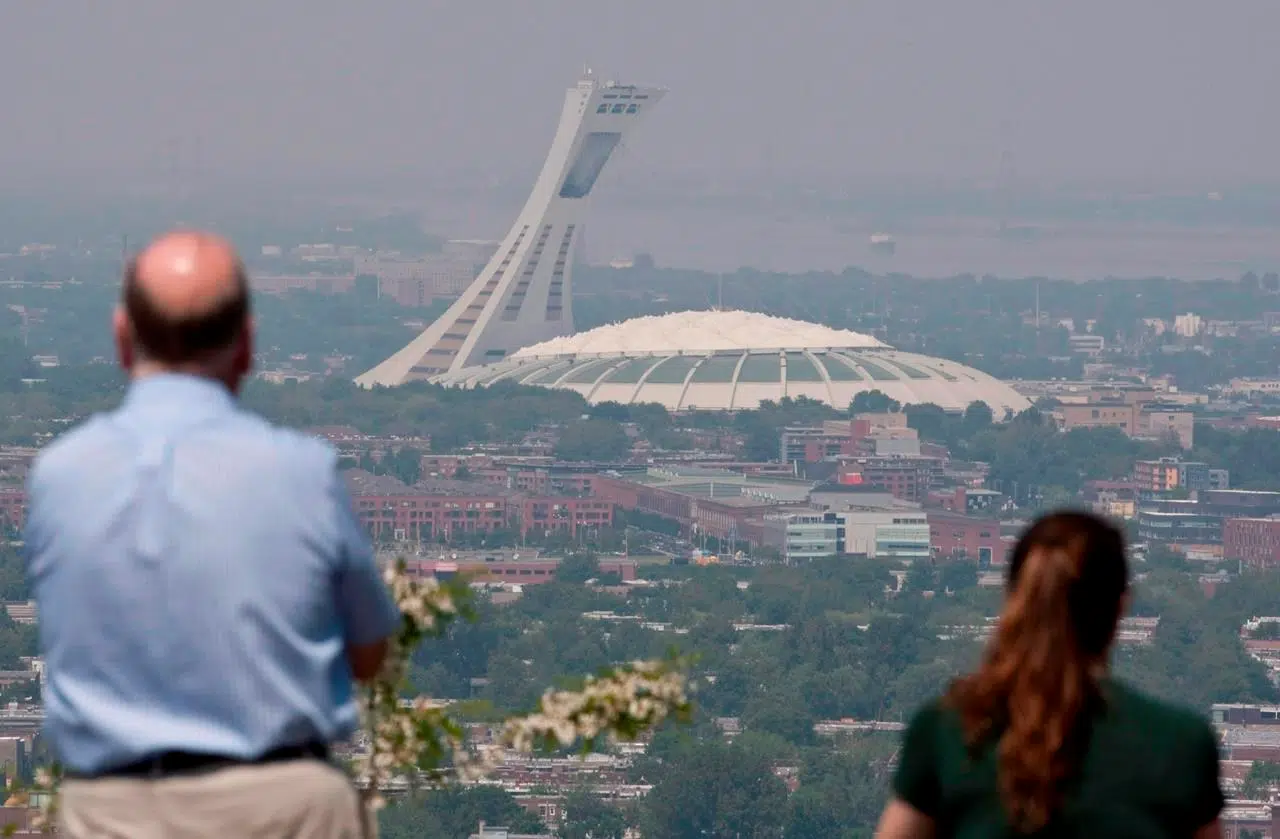
Montreal’s Olympic Stadium still standing 40 years after Summer Games
MONTREAL — It’s been dubbed the “Big Owe” for its runaway construction costs and it has attracted widespread derision for falling concrete and roof rips but Montreal’s Olympic Stadium doesn’t just have detractors.
The Big O, as it is more commonly known, was built to be a monument and the signature piece of the first Olympics on Canadian soil — and so it was, said Dick Pound, former head of the World Anti-Doping Agency.
“But I think it ended up costing more than all the covered stadiums in North America combined,” he said, referring to a price tag of more than $1 billion.
The 2015 annual report by the agency that runs the stadium reported its roof was torn in 6,776 places and cost $454,000 to maintain last year — down from $1.4 million in 2014.
It cannot be used if there is more than three centimetres of snow on the roof, making the venue effectively unusable in winter.
Forty years after the Montreal Games opened on July 17, 1976, the stadium and its signature tower loom over the city’s skyline and remain visible and controversial Olympic legacies.
It was designed by French architect Roger Taillibert, who was tasked with creating a venue to host both the 1976 Games and, later, Major League Baseball’s Montreal Expos.
His vision included a massive concrete dome with a retractable roof, held up by cables suspended from the world’s largest inclined tower, at 165 metres high.
Taillibert, who is still active at 91, insists he wouldn’t change much about the project if he had it to do over again.
“I’m very happy with the design,” he told The Canadian Press in a phone interview.
He described the pool complex as “one of the most beautiful in the world” and said the facility’s use of ramps instead of stairs allows the free movement of people — an almost unheard-of innovation in the early 1970s.
“We tried to give the athletes and the population a facility that met the requirements for entertainment and sport. Voila!” he said.
The 1976 Olympics were supposed to be a self-financing enterprise with a total cost not to exceed $310 million.
However, the price spiralled out of control soon after construction began.
The organizing committee’s official report later blamed a host of factors including technical difficulties, the escalating costs of raw materials and damaging labour conflicts.
Although the main stadium was built in time to host the Games, albeit barely, the tower and roof would not be completed until 1987.
Claude Phaneuf, the city of Montreal’s main engineer for the Olympic installations, still believes the stadium was a well-designed project.
Both he and Taillibert blame the venue’s technical failings on the province, which took over construction from Montreal and Taillibert in 1974 when the project began to fall behind schedule and run over budget.
They maintain the engineers placed in charge of the stadium weren’t qualified and miscalculated in ways that later caused a lengthy list of problems.
A 55-tonne beam came crashing down in 1991, and two Rolling Stones concerts had to be cancelled in 1998 after a roof tear sent ice and snow crashing to the stadium floor.
The first roof lasted only 11 years and the second, installed in 1998, currently needs to be replaced, according to the province.
Taillibert, who once sued the city over his unpaid architect fees and described the stadium’s management as “incompetents,” appears to have made peace with the city, recently completing an amicable visit where he attended the opening of an exhibit at the Stadium commemorating the 1976 Games.
The city only made its last mortgage payment on the Olympic debt in 2006, more than 30 years after then-mayor Jean Drapeau famously declared the Games could no sooner have a deficit than a man could have a baby.
The final price tag was $1.47 billion, almost five times what had been promised.
But Pound, for his part, believes the debt gets a worse rap than it deserves.
He said Drapeau did not separate the Olympic budget from the infrastructure budget, meaning that long-term investments such as the sports complexes, road upgrades and extensions to the city’s subway system were included in the final price tag.
In that light, he said, taking 30 years to pay it off isn’t so bad.
“I don’t know about you, but that’s the way I bought my house,” he said.
Since the Expos left in 2004, the stadium has been used mostly for trade shows, concerts and the occasional major sporting event, such as one of the two legs of the 2015 CONCACAF Champions League soccer final.
Both Phaneuf and Taillibert, however, dream that one day the stadium will permanently return to its original function as a home for sport.
“It needs a club, either soccer or another (sports team),” Taillibert said. “It won’t have a high-level sports life without one.”
Morgan Lowrie, The Canadian Press
©2016 The Canadian Press


